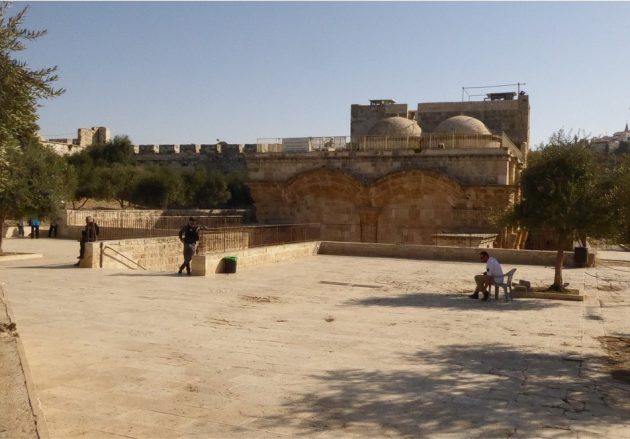

SunCalc is a small program that shows the movement of the sun and the phases of sunlight during a given day at a given location. You can see the position of the sun at sunrise, at the specified time, and at sunset. The thin orange curve is the current trajectory of the sun, that is, today’s path of the Sun through the sky is marked, and the yellow area around it is the change in the trajectory of the sun during the year, that is, the part of the sky where the Sun is at least once. The closer the point is to the center, the higher the sun is above the horizon. The colors in the time slider above show the sunlight exposure during the day. On the site, you set a point on the map and as a result you see a circle of the virtual sky. , The direction to the Sun at sunrise, at sunset, and at the current moment is also shown. You can find the Sun’s place on a good day. Using these visual data, you can understand in which direction the shadow falls and how long it is in time at a certain place. And then compare the position of the shadows with what you see in the photo. The exact real time of shooting, of course, will not work. It is especially difficult to perceive the difference between lighting in spring and autumn, when the length of the daylight hours is the same, but the sun shines at different angles.
But most often the discrepancy can be noticed. This is a convenient tool that helps people searching for shadows in a photo or video to calculate the location. SunCalc is built out of the box with minimal programming. It looks like google maps on steroids. To get to know this tool better, in this article we will look at some ways and methods of using SunCalc in various investigations. We will set problems and solve them using the “solar” calculator.
Let’s set the first data. The shadows and the position of the Sun are clearly visible, plus the language is Portuguese and the background song is Brazilian. The timestamp is 4:31 pm (UTC). The sea is visible. The first guess is that it is in Lisbon.
Open SunCalc and set the time and place:
The sun should have moved to the southwest of the city at that time.
In the image, the Sun is on the right over the sea. Nearby you can see a four-lane avenue with a line of palm trees in the middle, a parking lot and an elongated roundabout that appears to have been built recently.
Let’s make an approximate scheme of placement.
Options that do not correspond to the position of the sea and the direction of the roads are excluded.
In the original image, the other shore is not visible, we conclude that the picture was taken to the west of the point where the Tagus flows into the ocean. Further, on Google maps and satellite images, you can sort through the relevant options, focusing on palm trees and a 4-lane avenue.
The photo was taken on October 14, 2019 in Jerusalem near the Al-Aqsa Mosque. Here’s how to determine the time of day by the ratio of the length of the shadow to the height of the object. We know the date and place, the object and the shadow are perpendicular to the shooting direction, the shadow falls on a flat horizontal surface, the photo is free of distortion.

1. We measure two parameters in the photo – the length of the shadow and the height of the person:

2. Go to SunCalc, enter the location and set 2.33 meters in the “at an object level” field, then select the time so that the ratio of the shadow size becomes as in the picture (3.53 meters):
Let’s consider another example.
This was filmed in Yemen, on May 12, 2015, in the city of Zabid. Many people died due to an airstrike.
1. We measure the length of the shadow and the height of the person in the photo (the ratio is important):
2. Заходимо на SunCalc, вводимо місце розташування та в полі «object level» встановлюємо 5,67 м, потім підганяємо час так, щоб тінь була довжиною 9,84 метра:
The length of the shadow 15 minutes before the received time and 15 minutes after the calculated time.
3. We get the time with an accuracy of 15 minutes:
This example is part of a chain of larger investigation, but it is very illustrative.
We see a shadow on the roof, with the lower side of the triangle parallel to the road.
We know that the photo was taken on April 18, 2018 at 09:15, we set this time and date in SunCalc:
We are looking for a street on the map, not too wide, which is parallel to the side of the triangle cut out of the roof. (You can use PiP to overlay a picture on top of the program)
The first statements about the capture of Hadrut by the Azerbaijani army appeared on October 9. Therefore, it is likely that this video was shot between October 9 and 15. For the analysis of shadows, we will adopt the date of October 14. This may lead to some inaccuracy. However, given the small range of dates, this inaccuracy is likely to be minimal. Analysis of the shadows in the first video using SunCalc gives a time of around 2:00 p.m. It should be noted that due to the lack of obvious objects for anchoring, this estimate can be considered very approximate with an error of about one hour.
Assuming the second video was taken on October 14th, the shadow analysis gives a time of 15:11. This estimate can be given with more confidence because the shadow of the tree in the video falls on the pile of debris seen in the satellite image. Thus, the angle of this shadow is about 45 degrees, which in turn gives an azimuth of 225 degrees and a time of 15:11.
Lunar calculator mooncalc.org:
Planetary Calculator planetscalc.org:
orbtrack.org satellite calculator:

